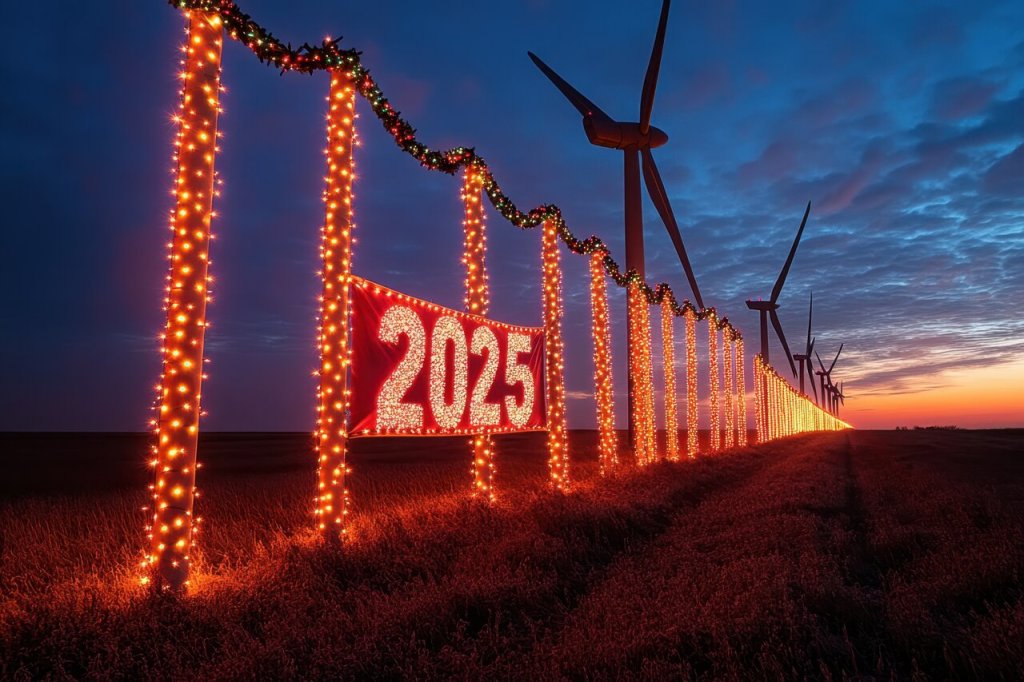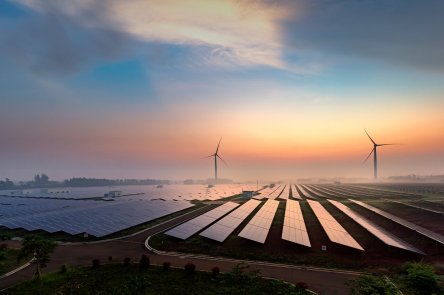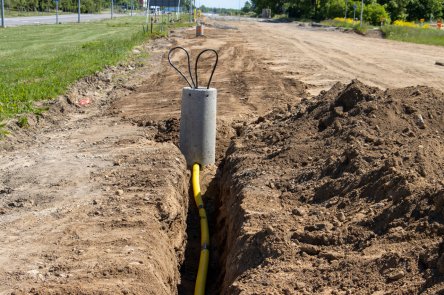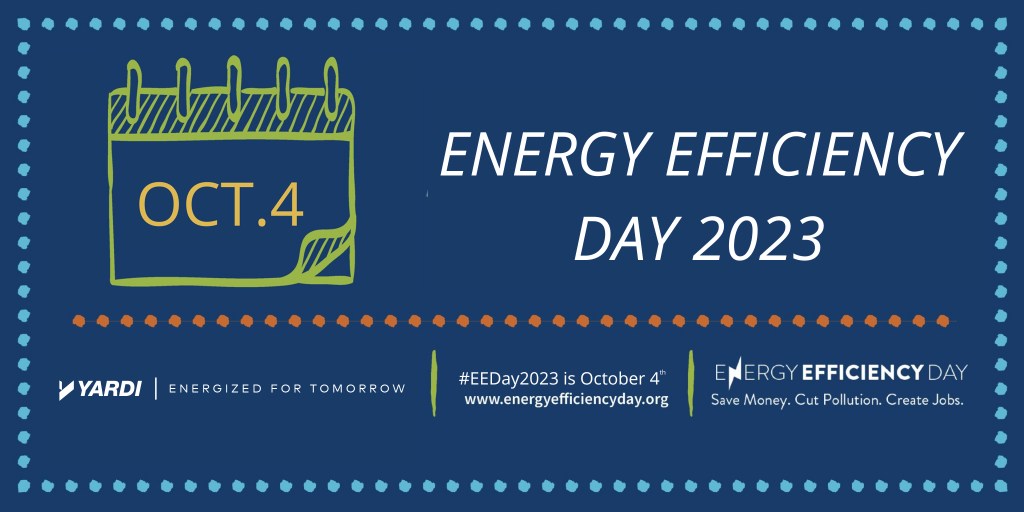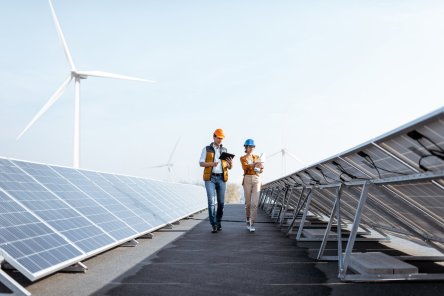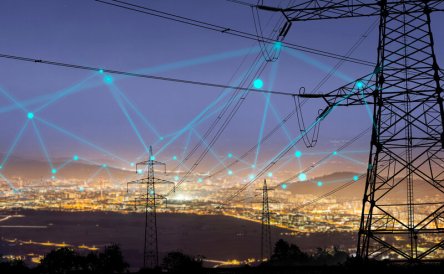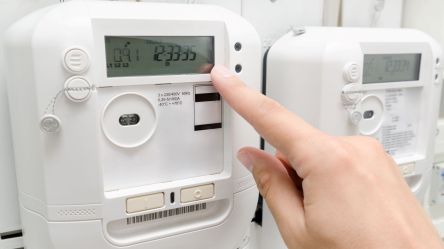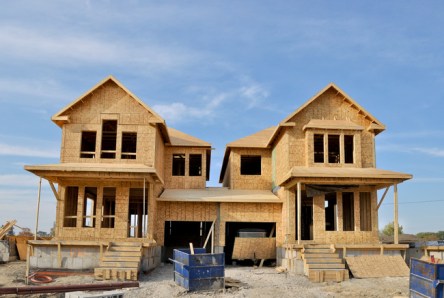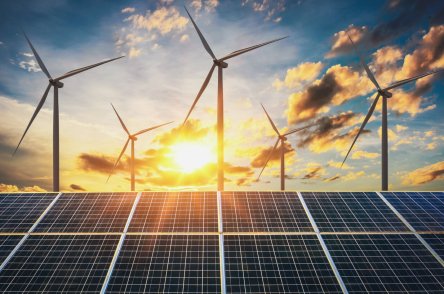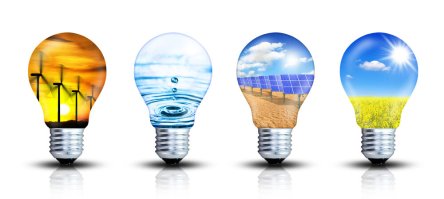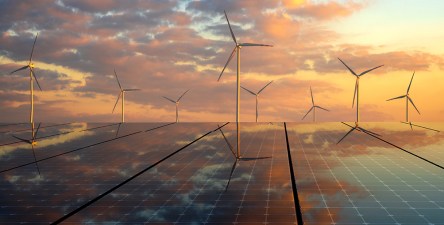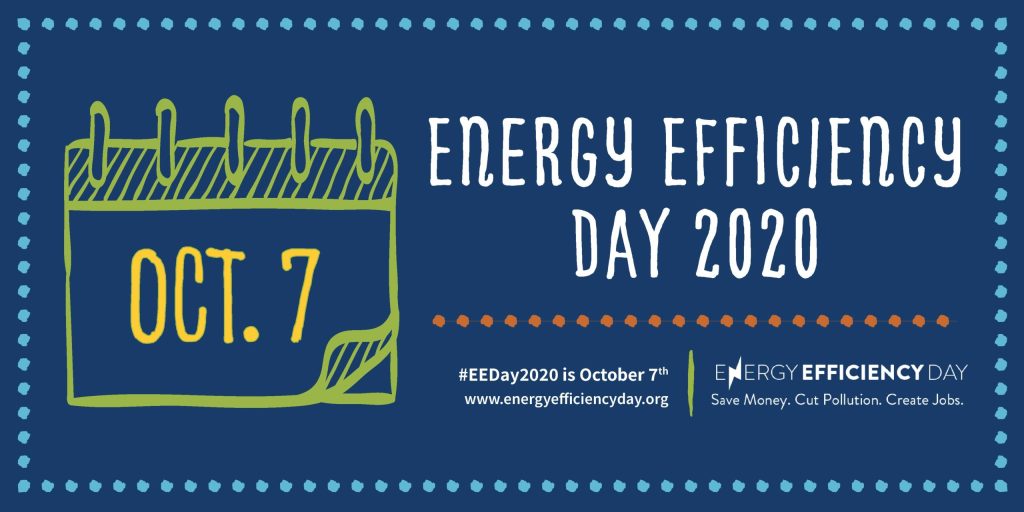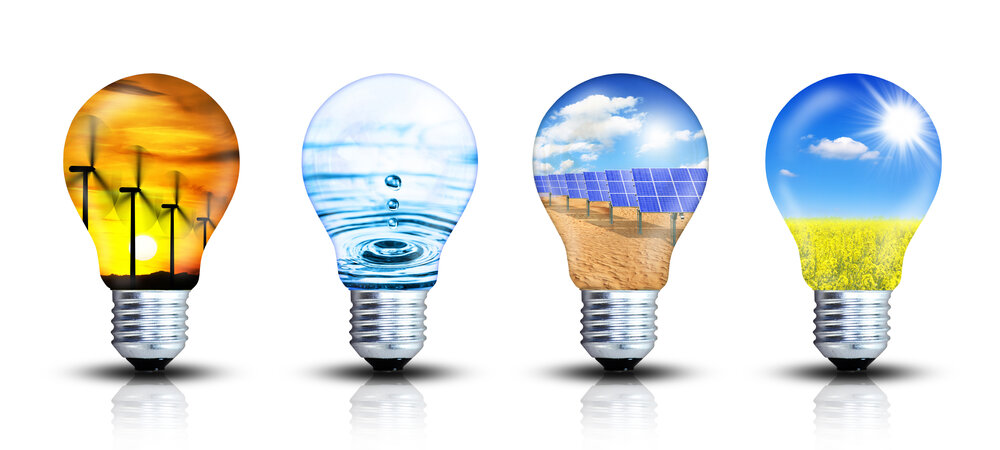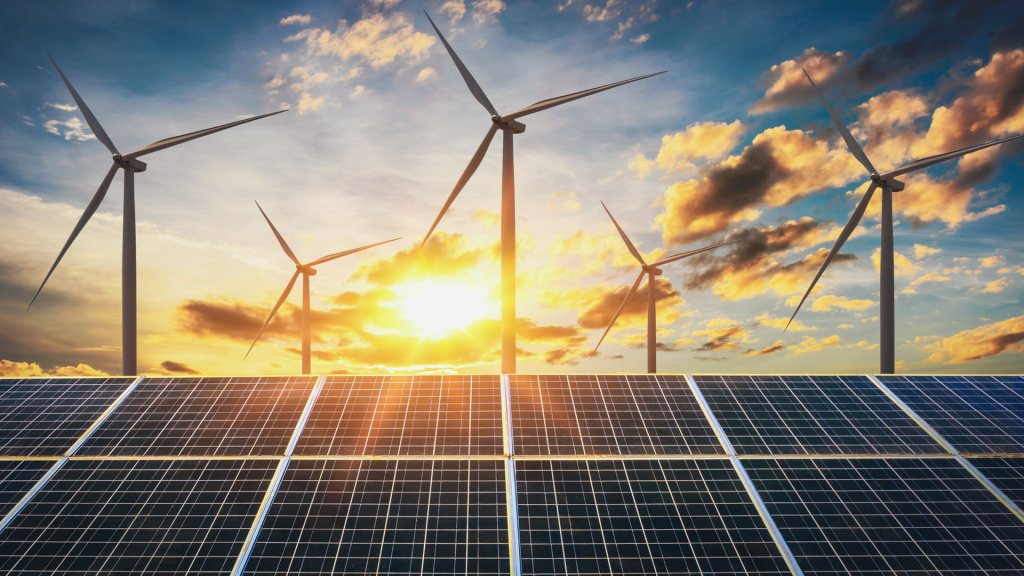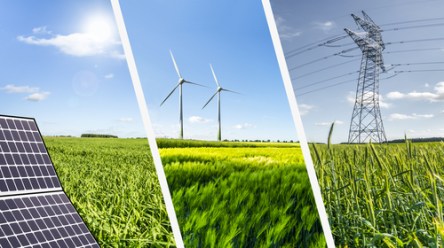Did you know that residents can choose their electricity provider in certain markets? Retail energy markets give consumers the power of choice, which includes the ability to select a competitive energy rate. Read on for information about retail energy providers, green alternatives and where renters are finding the best deregulated energy sources to protect against rising electricity rates. Energy basics: the electric grid Most consumers take it for granted that the lights will turn on at the flip of a switch. However, the system that makes this possible is complex, involving power plants, transmission lines and various market participants. According to the U.S. Energy Information Administration (EIA), the U.S. electric grid comprises more than 12,500 utility-scale power plants that serve more than 160 million customers. Electricity isn’t easily stored, so grid operators and regional balancing authorities must constantly work to balance production and consumption. While supply and demand influence the price of electricity, regulators closely monitor and govern the market. Some authorities work to ensure grid stability while others focus on supplying and billing consumers for the electricity they draw from the grid. Under the traditional model, consumers depend on a single, tightly regulated provider in a vertically integrated power market. In deregulated energy markets (including 17 states and the District of Columbia), multiple energy providers compete to sell retail electricity to residences and businesses. This provides consumers the choice to shop among various retail plans, which offer competitive pricing, green energy options and other value-added services. Power in consumers’ hands With the freedom to choose the best deregulated energy sources comes the challenge of selecting the right plan. Understanding contract terms, rates, hidden fees and energy plan options can help businesses and residential energy users manage costs. So, how can renters make the...
BRG Realty Group on Energy...
Real Money & Time Saved
What if you could save thousands of dollars and hours each year while improving your utility management processes? Jessica Stevens, director of business systems and technology at BRG Realty, recently shared how the Yardi Energy Suite has helped the company overcome challenges and achieve tangible results by transforming their processes, improving efficiency and increasing recovery by nearly $650,000. About BRG Realty BRG Realty Group, LLC is a multifamily property management company serving greater Cincinnati, Columbus, Dayton and areas of Kentucky and Indiana. Their mission is to foster high-quality communities through innovative management, providing dependable services to residents, associates and business partners. Transforming processes Within the past few years, BRG has grown rapidly. To support their rapid growth, they needed to streamline operations and manage utilities more efficiently. To ease the burden on their accounting team and improve financial recovery from utility costs, BRG chose the Yardi Energy Suite, built into Voyager, as their solution. While the initial transition was “nerve-wracking” for the accounts payable (AP) team, they quickly realized the value. “Now they never want to go back,” Stevens said. Additionally, Yardi Pulse reports provide real-time data and analytics, helping BRG to detect and address issues like leaks or equipment failures promptly. Their team has been able to save 1,500 hours annually with Utility Billing and Utility Invoice Processing. Stevens described the transformation as “huge,” underscoring the substantial positive impact on their business. This investment has raised resident utility billing cost recovery from 70% to over 81% in just two years. With Yardi, BRG has saved countless hours, enabling them to support the company’s rapid expansion. Stevens explains, “From 2021 to 2023, we recovered a little over $650,000, and by 2024, we’re projected to recover 86%. It’s real dollars we can take and put...
Resolutions to Habits
For an Energy-Efficient 2025
Every new year starts with a “new year, new me” plan, which typically fades by the Spring. Let’s discuss how to turn resolutions into habits for an energy-efficient and sustainable 2025. Sustainable resolutions for an energy-efficient year begin with making practical resolutions that anyone can adopt to make their home or lifestyle more energy-efficient. Start by decluttering the physical space with an energy-efficient mindset. Get rid of unused electronics, which can reduce phantom load. Phantom loads sometimes referred to as vampire loads, are any electricity an appliance or device consumes, even when turned off. Reduce phantom load by always remembering to turn off lights and electronics when not in use. Printers, gaming devices, computer monitors, TVs or cable systems pull electricity from the grid even when not operating. Always have devices grouped on a power bar or strip. Recycle or donate old appliances and opt for energy-efficient ENERGY STAR®-rated replacements. Wash clothes in cold water and line dry when possible. Washing clothes in warm or hot water risks shrinking them. Install programmable or smart thermostats. Smart thermostats allow owners to control the temperature using settings on their smart devices. “An ENERGY STAR® certified smart thermostat offers more convenience, energy savings, insight, and control than manual or programmable thermostats. Homes with high heating and cooling bills and unoccupied homes for much of the day can save approximately $100 a year with an ENERGY STAR®-certified smart thermostat.” Reorganize spaces to optimize airflow and heating efficiency. Change air filters out regularly and tune HVAC equipment yearly. Seal heating and cooling ducts. “Sealing and insulating ducts can improve the efficiency of heating and cooling system by as much as 20 percent,” according to ENERGY STAR®. Workplace energy goals. Businesses and employees should collaborate on energy-saving resolutions to promote sustainability. To reduce office energy use, encourage hybrid work schedules. Upgrade to energy-efficient office lighting and HVAC systems. Implement office-wide reminders to power down equipment at the end of the day. Margaret Mead, the esteemed environmentalist, once stated, “Never doubt that a small group of thoughtful, committed citizens can change the world; indeed, it’s the only thing that ever has.” This powerful sentiment rings true for social movements and businesses determined to combat climate change. Host a few sustainability challenges to engage employees in green practices. The power of teamwork is key here, as it engages employees in sustainability and involves them in business carbon reduction efforts. For example, create “green teams” responsible for developing and implementing sustainable practices within the team or department. Organize friendly competitions to encourage employees to adopt eco-friendly habits such as reducing paper usage, carpooling or minimizing waste. Recognize and reward participants for contributing to a positive and engaging ecosystem, fostering a sense of community and shared responsibility. Form sustainable energy routines to build new habits. If daily habits do not change, you will never have a new year. Start with setting reminders or automating tasks like adjusting the thermostat when leaving home. Use apps to track electricity consumption and set usage goals. Energy Tracker on Apple IOS or Google Play is a good app to easily add, manage and evaluate meter readings and record electricity, water, gas and heat consumption. Make it fun for the family and create a rewards system for household members who consistently practice energy efficiency. One must better understand the psychology to break old habits. Habit formation is the process where repeated actions become automatic over time. This happens because the brain creates neural pathways that make these behaviors easier to perform without much thought. When a behavior is repeated enough, the brain learns to conserve energy by turning it into a habit. Patience is needed to overcome bad habits since solidifying them takes 18 to 254 days. Focus on consistency and avoid getting discouraged if instant results don’t happen. Keep tracking progress, stay committed and give yourself and others grace and time to let the...
Explore Renewable Energy...
Cleaner Greener Future
Renewable energy sources are crucial to the fight against climate change. On a long road trip across the country, many will find wind turbines, solar panels, and dams, all renewable energy technologies working to better future generations. As Earth Day approaches, let’s explore the world of renewable energy, discover the various sources available, and learn how to support the transition to renewable energy to contribute to a cleaner, greener future for our planet. Since the Industrial Revolution, most country’s worldwide energy mix has been dominated by fossil fuels, which has significant implications for the global climate and human health. However, renewable technologies, including solar, wind, hydropower, geothermal, and biomass, have rapidly grown. Approximately one-seventh of the world’s primary energy is now sourced from renewable technologies. Renewables play a critical role in clean energy transitions. Let’s learn how these sources work, their benefits, and their potential for widespread adoption. Solar: Solar energy is the most familiar renewable technology and has the most potential for cost savings. Solar energy is electrical or thermal energy harvested from the sunlight. It can reduce energy bills, increase home resale value, be low-maintenance and offer long-term savings. Net metering is a process that’s beneficial to the community because it allows consumers to sell excess electricity their solar panels produce back to the utility company, further reducing bills and reducing the community’s reliance on fossil fuels. The sun is a powerful force and one of Earth’s most reliable energy sources. As a result, solar energy is experiencing a remarkable surge in growth and will remain an influential player in energy for the foreseeable future. Wind. Humankind has always been aware of how valuable wind power can be in daily life, from sailboats to windmills. Wind energy is often considered a more...
ARPA-E Projects
Energy Tech Innovation Updates
Here’s the latest of our periodic updates on energy conservation technologies being developed under the sponsorship of Advanced Research Projects Agency-Energy (ARPA-E), the R&D arm of the U.S. Department of Energy (DOE). Grid goes underground In January, the DOE announced funding for 12 projects designed to develop cost-effective, high-speed and safe undergrounding technologies. The projects will seek to improve an electric power distribution system that includes more than 5.5 million line-miles and more than 180 million power poles. They are susceptible to damage by weather and its effects and account for a majority of power outages in the country. “DOE is supporting teams across the country as they develop innovative approaches to burying power infrastructure underground —increasing our resilience and bringing our aging grid into the 21st Century,” said Jennfer M. Granholm, Secretary of Energy. Universities, businesses and national labs receiving contracts under this initiative include Arizona State University, which will develop a water-jet underground construction tool that will eliminate the need for a hard drill bit; GE Vernova Advanced Research of Niskayuna, N.Y., which will develop a robotic worm tunneling construction tool capable of digging and installing underground conduits and cables in a single step; Pacific Northwest National Laboratory of Richland, Wash., which will employ artificial intelligence and augmented reality to identify existing utilities and other subsurface obstacles to installing underground power distribution lines; and Honolulu-based Oceanit, which will develop a look-ahead subsurface sensor system. Metals from macroalgae Funding announced in November will explore the feasibility of extracting rare earth elements (REEs), used in high performance electric motors and generators, and platinum group metals (PGMs), essential elements of decarbonization technologies, from marine macroalgae. The initiative supports a goal of securing a domestic supply chain for critical minerals and achieving U.S. net-zero goals. Teams...
Energy Efficiency Day, Oct. 4
Share Your Ideas
On the 8th annual Energy Efficiency Day, Oct. 4, Yardi Energy will join thousands of organizations in the U.S. and Canada in sharing ideas for reducing energy waste and expanding energy efficiency. Energy Efficiency Day provides a forum for U.S. and Canadian corporations, local governments, universities, utilities and other organizations to document such initiatives as upgrading lighting, building insulation and heat pumps and establishing partnerships with local utility companies to reduce stress on the grid during peak demand. The day helps those occupying and investing in residential, commercial, affordable and other property types “share tips, tools and stories that promote the multiple benefits of energy efficiency, [which is] the cheapest, quickest way to meet our energy needs, cut consumer bills and reduce pollution,” says the Energy Efficiency Day organization, a coalition of U.S. energy efficiency advocacy groups. Energy Efficiency Day holds special resonance for Yardi because it involves “a core component of our mission as a real estate technology provider. It’s a great opportunity to focus attention on the critical issue of energy performance, spur action and inspire long-term thinking about what’s needed to create a positive energy future,” adds Joe Consolo, Yardi industry principal for energy. In March, Yardi received the 2023 ENERGY STAR® Partner of the Year Sustained Excellence Award after being named Partner of the Year for five consecutive years. The Yardi ESG software suite enables green energy procurement, whole-building energy water and waste data aggregation, and reduced energy usage in residential and commercial properties. The company has also maintained ENERGY STAR certification for its corporate headquarters in Goleta, Calif. Learn more about ways to maximize the impact of Energy Efficiency Day, including a toolkit for promoting your efforts on social media channels, joining the conversation and finding news about energy efficiency...
Energy Projections
From U.S. DOE
Here are recent projections by the U.S. Energy Information Administration (EIA), a statistical and analytical arm of the U.S. Department of Energy that collects, analyzes and disseminates energy information. Record liquid fuel consumption coming in ’24 Global consumption of liquid fuels such as gasoline, diesel and jet fuel will set new record highs in 2024. After topping an average of 101 million barrels per day for the first time in 2023, consumption will average more than 102 million barrels per day the following year. Crude oil prices will decline in that time, however, largely due to increases in crude oil production, especially in North and South America. That could also drive prices lower at the pump. The price decline prediction holds despite announcements in 2022 and 2023 by the OPEC+ oil exporting cartel to cut crude oil production by about 3.5 million barrels per day. “Our forecast for global consumption of petroleum depends on uncertain economic conditions—especially in China,” said EIA Administrator Joe DeCarolis. “How China’s economy changes following its reopening from pandemic lockdowns could have a significant impact on global consumption of petroleum products.” Coal down, renewables up The share of U.S. electricity generated from coal will decrease from 20% in 2022 to 18% in 2023 and 17% in 2024. Meanwhile, the share of renewable energy as a source for electricity generation continues to increase and is projected to reach 26% of total generation in 2024. About two-thirds of the forecast increase in renewables generation comes from new utility-scale solar photovoltaic capacity, with most of the rest anticipated from new wind projects. About 5% of U.S. coal-fired electric-generating capacity retired in the 12 months before April 2023. Investment in renewable sources such as wind and solar and the operating cost advantage of those...
EIA Updates
Building Efficiency & More
This is the latest of our periodic updates on the U.S. Energy Information Administration (EIA), the U.S. Department of Energy’s statistical and analytical agency. EIA collects, analyzes, and disseminates energy information for the benefit of energy policymakers, analysts and consumers. Winter costs on the rise The EIA expects higher wholesale electricity prices this winter in every region of the country, with increases ranging from 33% higher in California to more than 60% in the mid-Atlantic and Central regions. Electricity price could peak more than three times higher in New England than elsewhere in the U.S., due to limited pipeline capacity for liquefied natural gas coupled with stronger global demand for LNG. In one encouraging sign for consumers, the EIA does not “expect retail electricity prices to increase as much wholesale prices this winter,” said Administrator Joe DeCarolis. Batteries on growth curve through ‘25 Developers and power plant owners plan to significantly increase utility-scale battery storage capacity in the U.S., reaching 30 gigawatts by the end of 2025. Batteries store extra energy produced by intermittent resources such as wind and solar. Battery storage capacity in the U.S., negligible prior to 2020, grew to 7.8 GW by October 2022, with 1.4 GW more capacity expected by the end of the year and an additional 20.8 GW through 2025, more than 75% of which will be in California and Texas. Developers have scheduled more than 20 large-scale battery projects to be deployed by 2025. The 409 megawatt Manatee Energy Storage in Florida is currently the U.S.’s largest operating battery storage project. Uptick in commercial building efficiency A recently released U.S. commercial buildings energy consumption survey report shows that the average total amount of energy used per square foot in commercial buildings decreased by 12% from 2012 to...
ESG Ready
OSCRE Innovation Forum
According to Naseem Wenzel, Executive Director and Head of Real Estate Assets at Lionpoint Group, “ESG is coming fast and furious, which leaves investment managers, real estate owners and operators and service providers in a position of either being reactive or proactive.” What position is your company in? In OSCRE’s May 25 Innovation Forum, ESG: Insights to Assess Your Readiness, the panel, moderated by Wenzel, discussed what’s needed to move the industry forward. The speakers represented “a mix of perspectives from change leaders in the industry” including Chris Devine, head of client analytics, Cushman & Wakefield, Rick Ferrino, senior VP technology, Blackstone and Soheil Pourhashemi, senior VP business technology, Brookfield Properties. When asked individually about their company’s approach to ESG, the panelists touched on creating long term strategies, dealing with resource issues including staffing and training to focus on ESG and the overall need to automate data collection, analytics and reporting. The speakers agreed that evolving practices and focusing on how data flows — including real-time reporting from assets, are important initiatives. With regard to governance, the panel discussed measuring and normalizing data, creating data standards and developing organizational maturity. One speaker commented that ESG practices are integral to building a resilient business and creating value for investors. ESG is also a critical aspect of capital fundraising. For service providers, the focus is on the occupier side and how to get data standards in place, with information flowing from investors to occupiers. All the panelists agreed that automating data collection and reporting is key. Survey responses on ESG readiness In OSCRE’s recap of the session, the audience’s answers to the polling questions included these key takeaways: 53% of respondents described their organization’s level of preparedness as just getting started and 0% reported that...
ESG Insights
OSCRE Webinar Recap
Are you ready for new ESG regulatory requirements and increasing investor demands? OSCRE Innovation Forum’s recent webinar, Constructing an ESG Framework for the Future, provided expert insight into this critical initiative. Moderated by Lisa Stanley, CEO at OSCRE, the panelists were Dan Winters, Head of Americas at GRESB, The Global ESG Benchmark, Naseem Wenzel, Strategy + Innovation Lead Partner at Cohn Reznick and Daniel Egan, Senior Vice President, Energy and Sustainability at Vornado Realty Trust. Read on for some important takeaways. Top ESG challenges A polling question during the webinar asked participants to identify the top challenge they face for ESG initiatives. 42% cited inconsistent data across platforms, tied with 42% that stated building skills to implement ESG initiatives are the top challenges. In its January e-newsletter, OSCRE responded to the polling results, “Inconsistent data across platforms is not a new phenomenon for organizations…While investment funds report their activities including zero-carbon targets and other environmental impact initiatives through their Annual Reports and GRESB benchmark reports among others, the information that’s reported is gathered at the property level. This need for information confirms common ground — the need for standardized information for property owners, occupiers and investors that inform decisions and provide insight for risk assessment.” Clearly, there’s a need for not only impeccable data from a centralized location (a single source of truth), but also the ability to automatically extract and properly analyze it for meaningful application. This applies to ESG efforts as for all other operational processes. Good corporate governance Organizations must assess where they are today — including the level of responsible corporate leadership, to create a roadmap for where they want to go. Having an “ESG culture” across your business is key, meaning ESG is part of everyone’s job, as is...
Commercial Retrofits
A Beginner’s Guide
It’s never too late to give an existing structure a greener lease on life. Retrofits offer commercial building managers an opportunity to improve efficiency and drive cost savings. If you’re just getting started, the four retrofit methods below are a great starting point for sustainable practices. Observe, benchmark and improve your energy consumption. Monthly bills are not enough to accurately determine the efficiency of a commercial site. Retrofits connected to the internet of things (IoT) provide real-time insights into energy consumption. Explore usage based on subleased portions or the entire building. What’s best, you can implement IoT retrofits at a speed that matches your budget. Commercial managers often begin with submeters. Submetering offers insights into building performance while facilitating average savings of 2-5%. Implement supportive technology such as energy benchmarking to help you meet compliance regulations for ESG platforms like ENERGY STAR®. Promote water efficiency regardless of your location. Dry, arid regions have long prioritized end-user water conservation. Interest has grown nationwide: efficiency offers economic benefits to all managers regardless of the site’s location. Retrofits for cooling towers and chillers are a great place to implement efficiency measures. Such retrofits will have the most notable impact since they can consume tens of thousands of gallons each day. Smaller projects, such as fixtures, may follow. Streamline HVAC operations to reduce waste and increase comfort. The efficiencies of HVAC systems decline naturally over time. Promoting optimal operation and occupant comfort requires consistent maintenance and smart controls. Networked controllers and cloud-based management software enable you to monitor and manage usage. Smart thermostats and monitoring technology can offer up to 30% energy savings while slashing future maintenance costs. Improve indoor air quality (IAQ). Americans spend about 90% of their time inside. Indoor air contains a higher concentration of...
Looking Ahead
RE Trends for 2022
We compiled predictions from expert observers to get a sense of what’s in store for the real estate industry in 2022. Excerpts follow. Foreseeing a ‘whirlwind housing market’ Pandemic-ignited home-buying, driven by supply shortage and low mortgage rates, shows no signs of slowing down. “We expect a whirlwind 2022 for the housing market,” says Danielle Hale, chief economist for Realtor.com, with home sales increasing 6.6% and home prices 2.9% above 2021 highs despite a small uptick in inventory. While affordability, rising interest rates, and supply and labor shortages will continue to pose challenges, “home buyers should find the coming months to be more advantageous than any time in 2021. While sellers remain in a very strong position, price stabilization and the continuation of competitive interest rates may bring some welcome relief to buyers in the new year,” notes Nick Bailey, president of RE/MAX LLC. Home living tops investment U.S. real estate remains among the most attractive and largest asset classes for investors and families alike. “For the second year, homeowners have told us that their main reason for taking on projects around the home is to better meet their needs. Before the pandemic, return on investment was the primary motivation. This is a huge shift and something we know will continue throughout 2022, especially as people continue to spend more time at home,” says Robert Morgenstern, principal of New York City-based Canvas Property Group. Tech amps up Property management technology’s capabilities and use will continue to grow for reasons of convenience and social distancing. “With the right data collection tools and overall acceptance by industry professionals, real estate will greatly benefit from the increased use of technology in 2022,” according to Paul Ryll, owner of Oscar Mike Mobile Appraisers of Greenville, S.C. And with...
22 Energy Outlook
Favors Renewables
Global energy demand surpassed pre-COVID 19 levels in 2021. Energy was the top-performing S&P 500 sector that year. With energy demand still on the rise, the energy sector stands to grow even more in 2022. The Balance Sheet sampled expert predictions of what’s ahead for renewables and the rest of the energy industry in 2022. We will keep tabs on key developments throughout the year. Economist Intelligence, a policy analysis and consulting group, predicts that global energy consumption will rise by 2.2% in 2022 as economies recover from the pandemic. All types of energy except nuclear power will benefit, although “energy companies will need to undertake an urgent review of their strategies next year, as governments and investors ramp up pressure to cut emissions.” Kathryn Downey Miller, president of energy industry analysis firm BTU Analytics, echoes that assessment. “Despite a strong profit outlook heading into 2022, enormous pressure is coming from providers of capital and other stakeholders to evolve business models for the new energy economy,” she said in an editorial published in December. That pressure is a principal reason that “renewable energy growth is poised to accelerate in 2022, as concern for climate change and support for environmental, sustainability, and governance considerations grow and demand for cleaner energy sources from most market segments (residential, commercial, and industrial consumers) accelerates,” according to an energy industry outlook report prepared by Deloitte. Renewable generation expands Renewables were the only energy source for which demand increased in 2020, according to the International Energy Agency. Renewable electricity generation in 2021 expanded by over 8% in 2021. Record levels of wind and solar generation additions are expected to come online in 2022, according to S&P Global Market Intelligence, which studies energy markets. The adoption of renewable energy sources will be...
Control Costs
With Strategic Energy Management
The residential real estate sector is going to see a few changes in the near future as businesses continue to open up their office environments, travel and immigration resume to pre-pandemic levels and Canadians gain a sense of confidence in venturing out of their homes on a more regular basis. Though human interactions will see a subtle shift from the pre-pandemic era, how residents use their living spaces will continue to evolve. This is an opportunity for real estate companies to re-evaluate the ways in which they manage their properties. Regardless of their approach to marketing, resident relations and other operations – the value of a viable energy strategy is gaining importance in the Canadian real estate sector. Residential property owners can increase asset values, boost stakeholder satisfaction and ensure compliance by adopting smart energy consumption practices. That’s best done strategically, especially as costs remain under heavy scrutiny and ESG accountability assumes ever-greater importance. First step: Utilize utility data to minimize costs Understanding and documenting energy consumption across a portfolio should be the first step in building a value-add energy strategy. Why? Because this operational area is one of a property’s largest controllable operating expenses. Understanding and harnessing utility data can make a property more valuable, more likely to retain residents, more easily marketed for sale, more compliant and more attractive to prospective tenants and investors and less likely to require concessions to rent. Advanced automated utility expense management systems also reduce duplicate payments, late fees, system interface errors and inaccurate spend measurements. They replace the cumbersome process of tracking consumption in excel, and wading through stacks of paper utility bills with digital invoice transmission and automated usage validation. Along with creating a single solution for invoice tracking, payments, budgeting and reporting, these systems...
Energy Innovators
Earn Awards Spotlight
Even as pandemic-driven lockdowns and stay-at-home mandates curtailed energy consumption in 2020, organizations in all types of industries remained focused on impactful conservation initiatives. Here’s a look at some of the companies that joined Yardi in receiving a 2021 ENERGY STAR® Partner of the Year Sustained Excellence Award, the highest honor bestowed by the U.S. Environmental Protection Agency and the U.S. Department of Energy for initiatives that reduce energy consumption and mitigate climate change. BENTALLGREENOAK. Along with achieving ENERGY STAR certification for 81 properties, the Seattle-based global real estate investor continued benchmarking its assets’ sustainability performance against internal best practices and peers. BentallGreenOak also used ENERGY STAR metrics to measure the success of its energy efficiency strategies. FOOD LION INC. The Salisbury, N.C.-based retail grocery store chain expanded its LED lighting retrofit program to 32 stores, saving more than 9.2 billion BTUs annually. It also earned ENERGY STAR certification for 919 stores, which encompass 89% of its portfolio. HEXION INC. The Columbus, Ohio, producer of thermosetting resins, coatings, adhesives and specialty resins executed 52 energy projects that produced $2 million in savings. It also conducted treasure hunts at 23 sites that identified 131 potential projects. The Columbus, Ohio, company’s energy management program has reduced energy intensity by 28% and saved $14 million in costs since 2014. INTERTAPE POLYMERGROUP INC. The Sarasota, Fla., manufacturer of paper and packaging products achieved a 6.8% reduction in energy intensity over 2019, part of energy savings equivalent to $6.4 million since 2009. The company also participated in several ENERGY STAR certification, Challenge for Industry and Find the Treasure activities. MERCK & CO. INC. The pharmaceutical and healthcare company issued a letter of intent to purchase 60 MW of solar energy, matching the amount purchased in 2019. The Kenilworth, N.J.-based...
Energy Bulletins
From U.S. DOE
The following information is courtesy of the Energy Information Administration, a statistical and analytical agency of the U.S. Department of Energy that collects, analyzes and disseminates energy information. Post-COVID consumption lags The U.S. will likely take at least a decade to return to 2019 levels of energy consumption and carbon dioxide emissions due to the impact of COVID-19 on the economy and global energy sectors. “The pandemic triggered a historic energy demand shock that led to lower greenhouse gas emissions, decreases in energy production, and sometimes volatile commodity prices in 2020,” says Stephen Nalley, the EIA’s acting administrator. Around the world, global demand for petroleum products in 2020 fell by 9% from the previous year. Just how long it will take production and consumption levels to return to their pre-pandemic levels depends on a range of factors including the pace of economic recovery, advances in technology and government incentives. “It will take a while for the energy sector to get to its new ‘normal,’” according to Nalley. Battery power charging up A significant number of battery energy storage systems will be added in the U.S. between now and 2050, at which time 59 gigawatts (GW) of battery storage will serve the power grid. Falling battery costs, growth in non-dispatchable renewables (such as solar and wind, which can’t be turned on or off at will) and tax credits are the key drivers of the capacity expansion. Wind becomes a force In 2019 and 2020, developers in the U.S. installed more wind power capacity than any other generating technology. Wind turbine capacity additions in 2020 totaled 14.2 GW, surpassing a record that had stood since 2012. The impending phasing out of the full value of the production tax credit spurred investments in this technology. Congress extended...
Did COVID-19 Spark
A Renewables Renaissance?
Some industries, such as technology and online media, are doing well amid COVID-19, even as the pandemic cuts a swath through virtually every public health, political, social and economic structure. Other segments of the economy, such as travel and hospitality, face a perilous future. And what about the vital energy sector? Before the pandemic hit, energy demand was projected to grow 12% between 2019 and 2030, as developing nations broadened their power generation capacities. But COVID-19 “has brought the generation of energy from fossil fuels to breaking point,” says the World Economic Forum, with global energy demand declining by 5% in 2020. Despite a larger population and world economy, demand in 2050 will be about the same as it is today, according to risk management and quality assurance experts DNV GL, due partly to the effects of COVID-19. “The scale of the fall in demand, the speed of change, and how widespread it has been have generated a radical shift that seems to be more than a temporary short-term drop in demand for fossil fuels, at least in the power sector,” Nelson Mojarro, a World Economic Forum advisor, said in June. That development has opened the door for renewable energy generation to play an even more prominent role on the world energy scene. Renewables, including solar, whose cost has fallen by 82% over a decade, are the lowest-cost source of new power generation, according to the International Renewable Energy Agency. That trend is expected to hold over the foreseeable future. And COVID-19, Mojarro says, “has had a game-changing effect in accelerating the clean energy transition in the power sector.” Within 10 weeks of the start of widespread lockdowns, according to data compiled by the International Energy Agency, the U.S. increased its renewable energy consumption...
Water Wins
Tap the Savings
The cost of water can be deceptively low — it doesn’t include the energy expenses of pumping and heating the water. When you evaluate water and energy efficiency together, you’re in a better position to maximize resource and cost savings. Multifamily companies can get some quick wins with minimal effort and no (or low) capital expenditure. All you need to do is make some changes to operations and maintenance practices along with minor retrofits or replacements as needed. The Environmental Protection Agency’s (EPA) WaterSense program recently shared strategies to save energy and water in the webinar “Reducing Costs with Quick Water Wins.” WaterSense is a voluntary program launched by the EPA in 2006 that provides a simple way to identify water-efficient products, programs and practices. In the webinar, the EPA’s Tara O’Hare highlighted the connection between water and energy, often referred to as the energy-water nexus, since every gallon of water has an energy footprint for pumping, moving, heating and treating water. To keep costs low, WaterSense offers the following tips: Review all bills for accuracy Check facility rate class and water meter size on bills Work with your local utility to correct any problems Identify leaks and waste O’Hare said that energy and water leaks linked to continuously running water comprise approximately six percent of water use and that potential financial losses from water such as a drip irrigation malfunction or an unattended water hose at night can amount to $4,300 or $16,000 per year, respectively. How can you make sure this doesn’t happen at your property? Conduct a walk-through to identify leaks (look for puddles and drips) and ask for the vigilance of employees and tenants to help identify leak and waste indicators as soon as they occur. Follow best practices You’ve...
Power Plays
Energy Efficiency Day 2020
While energy efficiency is important every day of the year in any economy, 2020 is presenting unique challenges along with big opportunities for companies and individuals alike and now is a great time for everyone to take control of energy use and utility costs. Using energy efficiently is the simplest way to lower utility bills, improve air quality and reduce environmental impact as part of a larger concerted effort. Driven by the mission to save money, cut pollution and create jobs, Energy Efficiency Day on October 7, 2020, is a collaboration of dozens of energy efficiency advocacy groups around the U.S., including the American Council for an Energy-Efficient Economy (ACEEE), Advanced Energy Economy, Alliance to Save Energy, Natural Resources Defense Council, the Regional Energy Efficiency Organizations and many others. As we come together for the fifth annual Energy Efficiency Day, the event website offers some great tips to deal with pandemic-related utility costs now and through the summer. A costly lockdown While working remotely and spending more time at home is helping to stop the spread of COVID-19, it’s not helping most people’s wallets. For areas in a home that need improvement to increase energy efficiency, workers usually need inside access. During a pandemic, that kind of exposure carries serious safety concerns. If you’re not ready to let utility pros into your home, what can you do? Consider a virtual energy audit. Check with your local utility companies to find out if they offer this convenience in your area. There are also some things you can do yourself to increase energy efficiency and stop the waste. Following are a few highlights and takeaways from the article Pandemic Hurts Efficiency Jobs But You Can Still Make Energy-Saving Upgrades. Seal the gaps Check around windows and doors as well as mail slots, electrical outlets and window-mounted AC units. Wherever you find a crack or gap, seal it with caulk or weather stripping. Replace filters Keeping your furnace and air conditioner filter clean will ensure they aren’t working harder than they need to — which saves you money, lowers emissions and extends the life of your equipment. Lighten up your bills Switch your bulbs to LEDs, which use up to 90% less energy to deliver the same amount of light as incandescent bulbs — and they last up to 25 times longer. Save water With a high efficiency showerhead, you can save more the 2,000 gallons of water per year, most of which is hot water, so you also get the savings on heating. While you’re at it, install an aerator in your kitchen sink — a pressure compensating model ensures plenty of flow power while it reduces water use. Want to learn more? Get the scoop on ways to save on your next energy bill for tips including ENERGY STAR® appliances and how you can take part in Energy Efficiency Day. For property managers and owners looking for ways to gain control over energy consumption and reduce costs, join a free webinar on energy solutions brought to you by Yardi, named an ENERGY STAR Partner of the...
Pandemic-Inspired
Tech Innovations
“To effect change, there must be a stimulation of a magnitude that means companies cannot do anything but make bold decisions to survive. COVID-19 is that magnitude.” — Stuart Carlaw, chief research officer for technology analysis firm ABI Research Amsterdam-based consumer trend firms TrendWatching and Business of Purpose created COVID Innovations to track technology innovations arising from the pandemic. Here’s a summary of some of the projects listed on the site. Japanese start-up Donut Robotics has devised a smart mask called C-Mask. It can be worn over fabric-based masks and connects to an app via Bluetooth, enabling it to transcribe speech to text messages that are sent via the user’s smartphone. It can also translate from Japanese into eight other languages. After debuting C-Mask in Japan in September, Donut Robotics is eyeing the U.S., Europe and China as potential markets. Meanwhile, Detroit-based Redcliffe Medical is marketing its own mask design. LEAF is a transparent device composed of medical-grade silicone that promotes safety while keeping the wearer’s identity, lip movements and facial expressions visible. It’s the first FDA-registered mask with N99-standard air filtering abilities and includes an antifogging feature. Can ultraviolet light provide a line of defense against the coronavirus in warehouses, schools, restaurants, supermarkets, offices and other venues? MIT thinks so and created a robot designed to disinfect spaces by emitting UV light. It’s already been used successfully at the Greater Boston Food Bank. A 3D camera helps the device navigate around obstacles while a 2D device measures distances by illuminating targets with light. Another robot, StrikeForce, comes from XENEX Disinfection Systems in San Antonio, which claims its invention can destroy the novel coronavirus in 2 minutes. The company’s LightStrike Germ-Zapping Robots (a trademarked name) uses a xenon lamp to generate bursts of high intensity ultraviolet light. Restaurants, car dealerships, hotels, office buildings and gyms are among the potential candidates for StrikeForce, which is available on a limited basis in Texas, according to COVID Innovations in June. India’s TechMax hopes to ease workers’ transition back to multi-story office environments with its Sparshless solution, which allows touchless elevator unit operations. Summoning the elevator is as simple as placing your hand near a reader. Once inside, just point your finger at a button from about a half-inch to three-quarters of an inch away. Many people have stayed true to their favorite eateries with pick-up and take-out orders. Is it possible to create a similarly contactless dine-in experience? Pasadena, Calif.-based FreshBytes is one tech firm that thinks so. In June, the online ordering system provider, which claims to be the only company that allows restaurants to update their dine-in menus directly from a mobile phone, announced a system that lets customers scan a QR device to view the menu, order and pay directly from a mobile device, with the guest order automatically printed in the kitchen. There’s no exchange of pens, paper or payment cards, and guest turnover is faster. Another California enterprise technology platform provider, Presto, says its free Contactless Dining Kit received orders from more than 5,000 restaurants in five continents within two weeks of its launch in late May. And in Europe, British engineering firm Arup designed modular “parklets,” outdoor seating areas made from hardwood and screened from each other by plants and acrylic glass that let restaurant patrons enjoy onsite dining while maintaining social distances. They’re part of a “Liverpool Without Walls” project designed to help that city’s restaurants reopen. The first parklet was opened in July. Microsoft responded to spiraling global unemployment with a skills initiative designed to bring digital skill learning opportunities to 25 million people by the end of the year. The software giant will leverage its LinkedIn and GitHub resources to identify in-demand jobs and the skills needed for them, provide free access to learning content, and deliver low-cost certifications and free job-seeking tools. Yardi responded to the pandemic with its own set of dedicated...
ARPA-E Update
Energy Research
Earlier this year, The Balance Sheet summarized some energy technology projects sponsored by the Advanced Research Projects Agency-Energy (ARPA-E), which carries out R&D for the U.S. Department of Energy. Here are a few more active projects. Warm and cool on demand Syracuse University seeks to improve comfort for office building occupants with a near-range micro-environmental control system. The system would store the cooling produced by the compression system at night and release it as a cool breeze of air to make occupants more comfortable during the day. And when heating is needed, the system would draw heat from its phase-change material and deliver warm air. Syracuse claims that the control system, combined with an expanded set-point range, could save more than 15% of the energy used for heating and cooling while maintaining occupant comfort. “If successful, [the control system] could increase energy efficiency, reduce emissions produced by powering traditional HVAC systems, and enable more sustainable heating and cooling architectures for energy-efficient building design.” Building breath test Specialized sensors tip off a building’s HVAC system that carbon dioxide-exhaling people are around and need ventilation. A Purdue University team is working on small-scale sensing systems that would use mass and electrochemical sensors to detect the presence of CO2. The Purdue team believes that combining two unique sensing technologies into a single package for monitoring CO2 levels could reduce building energy use by nearly 30% without sacrificing occupant comfort. Chopping home energy costs Meanwhile, researchers at Texas A&M University are looking at new detection solutions for residences, specifically enhanced pyroelectric infrared sensors that track occupancy and activity. Whereas such detection sensors traditionally can only notice people in motion, Texas A&M’s proposed system would identify non-moving heat sources. Quantitative information on movement would come from an “optical chopper”...
Improving Energy Efficiency
For Class B and C
Class A commercial buildings get all the fanfare. They have the nicest amenities, the best views and, of course, the highest rent. But let’s not overlook the value that class B and C spaces bring to communities and business owners. Often located in suburban areas or lacking glamour that high rises provide, these buildings still possess many advantages and simply don’t get the same type of recognition. A recent ENERGY STAR® report stated that 94% of all U.S. commercial buildings were properties under 50,000 square feet. Because class B and C buildings significantly outnumber class A, they can lead the way in contributing to a cleaner environment, improved leasing practices and cost savings techniques. At the recent 2020 Virtual BOMA Conference, Marta Schantz, senior vice president of Urban Land Institute (ULI), explained three major challenges for class B and C owners in regard to energy efficiency: Information constraints – Stakeholders are so consumed with day to day operations that energy efficiency gets put on the backburner. Lean on your property manager for data and best practices and educate yourself about building benchmarks to understand what’s working or not. Resource constraints – These buildings don’t have the budget or staff size of class As, so they often lack someone specifically assigned to energy projects, or a third party hired to oversee this aspect of the portfolio. Funding constraints – B and C class buildings typically don’t have capital planning funds to invest in larger retrofits with up-front costs. Owners also may not be able to take on long-term debt. How can a building owner overcome some of these challenges? Primarily, there are financing options available so that B and C owners can reach long term savings goals: cost recovery in terms of lease forms, utility on-bill financing, commercial property assessed clean energy financing (C-PACE), among others. As Schantz explained, an HVAC retrofit alone may not provide the necessary ROI, but bundled with LED installation or sensor installation, it can provide long-term savings with a relatively short-term payback process. As explained in a 2020 BOMA report, class B and C properties could save 15% on energy costs with basic low- to no-cost initiatives, or even up to 35% with the larger investments detailed above. BOMA’s research has found that sustainability initiatives can reduce operating expenses for class B and C buildings between $0.26 and $0.61 per square foot and increase the net operating income for these properties between 2.4% and 5.6% per year. What are some of the simplest energy solutions to implement? According to Joey Cathcart, associate at the Rocky Mountain Institute, here are some of the best low-cost, quick payback measures for energy savings across property type: LED lighting: LEDs use significantly less energy and last much longer than incandescent lighting. Controls/Sensors: Install LED’s in high-use areas and controls or sensors in low-use areas like closets and restrooms. Programmable thermostats: Simply program your temperature setting in times of low or no occupancy. Energy audits: Establish a baseline and identify where improvements can be made. Local authorities often provide grants for these projects. Window filming or shading: Reduce demands on HVAC and reduce solar radiation with tinting or shading. Lease provisions and green leases help increase investor, owner and tenant interest. “They help to overcome split incentives, improve transparency and indicate a commitment to sustainability,” Cathcart said. He detailed three low cost components to drive the highest lease impact: Integrate new building expectations by implementing low or no cost strategies into standard operating procedures. Integrate language into leasing that includes periodic energy audits. Tenants see this as a commitment to sustainability. Document operating best practices to optimize performance in common areas and tenant spaces. “The best time to integrate provisions is either during tenant renewal or at the beginning of a new tenant lease,” Cathcart explained. Eugenia Gregorio, founder and principal at Gregorio Sustainability, presented a case study of The Tower Companies...
What’s Ahead for Energy
2020 and Beyond
The U.S. Energy Information Administration, the U.S. Department of Energy’s statistical and analytical agency, provides annual projections for U.S. and world energy markets over the next 30 years. Highlights from the latest release: Overall U.S. energy consumption will grow more slowly than gross domestic product as energy efficiency continues to increase. Purchased electricity consumption will increase by 0.6% and 0.8% annually in the residential and commercial sectors, respectively, due to increased demand for electricity-using appliances, devices and equipment. In 2019, 44% of residential light bulbs were LEDs, the most efficient light bulb technology available, and 17% of commercial lighting service demand was met by LED bulbs and fixtures. By 2050, these shares will reach 90% and 88%, respectively. Energy-related CO2 emissions decrease initially then rise closer to 2050 as economic growth and increasing energy demand outweigh improvements in efficiency. After initially falling, total U.S. energy-related CO2 emissions will grow modestly in the 2030s, driven largely by increases in energy demand in the transportation and industrial sectors. Emissions in 2050 will still be 4% lower than 2019 levels. Increases in fuel economy standards will drive a 19% decrease in U.S. motor gasoline consumption through 2050. The U.S. will continue to export more petroleum and other liquids than it imports as domestic crude oil production continues to increase and domestic consumption of petroleum products decreases. Renewables/biofuels Renewables will be the fastest-growing source of electricity generation due to continuing declines in solar and wind capital costs coupled with federal tax credits and higher state-level targets. Total renewable generation will exceed natural gas-fired generation after 2045. Without distributed generation sources, particularly rooftop solar, electricity consumption in residential and commercial buildings would be 5% and 3% higher, respectively, by 2050. Generation from renewable sources will rise from 18% of total generation in 2018 to 38%. Solar photovoltaic (PV) will contribute the most to the growth in total renewable generation, increasing from 13% in 2018 to 46%. Although onshore wind generation will more than double, its share of renewable generation will go from 37% to 29%. The U.S. will add 117 gigawatts of new wind and solar capacity between 2020 and 2023. Electricity is the fastest-growing energy source in the transportation sector, increasing by an average of 7.4% per year as a result of increased demand for electric light-duty vehicles. While gasoline vehicles will remain the dominant vehicle type through 2050, the combined share of sales from gasoline and flex-fuel vehicles (which use gasoline blended with up to 85% ethanol) declines from 94% in 2019 to 81% because of growth in sales of battery electric vehicles, plug-in hybrid electric vehicles and hybrid electric vehicles. The percentage of biofuels (ethanol, biodiesel, renewable diesel, and biobutanol) blended into U.S. gasoline, diesel, and jet fuel will increase from 7.3% in 2019 to 9% in 2040. Commercial and industrial space Total delivered energy consumption in the U.S. buildings sector will grow by 0.2% annually as energy efficiency improvements, increased distributed electricity generation and regional shifts in the population partially offset the impacts of higher growth rates in population, number of households and commercial floor space. Lower costs and energy efficiency incentives will result in efficient LEDs displacing linear fluorescent lighting as the dominant commercial lighting technology by 2030. Commercial PV capacity will increase by an annual average of 3.4%. Residential space S. total delivered residential energy intensity, defined as annual delivered energy use per household, will fall by 17% between 2019 and 2050 as the number of households grows faster than energy use. Factors contributing to this decline include gains in appliance efficiency, onsite electricity generation (e.g., solar photovoltaic), utility energy efficiency rebates, rising residential natural gas prices, lower space heating demand and population shifts to warmer regions. Residential PV capacity will increase by an average of 6.1% per year, accelerated by rising incomes, declining system costs and social influences. Learn how Yardi software can increase energy efficiency...
Get Current
With Energy Updates
The U.S. Energy Information Administration distributes information on energy-related trends and milestones. Here’s a sampling of recent postings from the EIA’s Today in Energy news and information resource. Renewables on the rise The EIA projects that electricity generation from renewable sources such as wind and solar will surpass nuclear and coal by 2021 and natural gas in 2045. Most of the growth in renewable electricity generation comes from wind and solar, which account for about half of renewable generation today. These technologies will account for nearly 80% of the renewable total in 2050. New wind capacity is expected to continue at much lower levels after production tax credits expire in the early 2020s. Growth in solar photovoltaic (PV) capacity will continue for both utility-scale and small-scale applications through 2050 because of declining PV costs. In April 2019, U.S. monthly electricity generation from renewable sources exceeded coal-fired generation for the first time. Wind blows by hydro In 2019, annual wind generation exceeded hydroelectric generation as the top renewable source of energy generation in the U.S. for the first time. Wind generation totaled 300 million megawatthours (MWh) in 2019, exceeding hydroelectric generation by 26 million MWh. Energy consumption heats up World energy consumption will grow nearly 50% by 2050, with the growth focused in regions where strong economic growth is driving demand, particularly Asia. The industrial sector, including refining, mining, manufacturing, agriculture and construction, will account for more than half of end-use energy consumption through 2050, by which time global industrial energy consumption will reach about 315 quadrillion British thermal units (Btu). Transportation energy consumption is slated to increase nearly 40% by 2050 and is largely driven by developing countries with non-market economies. Energy consumed in the buildings sector, which includes residential and commercial structures, is...
Revisiting the 1920s
Energy Then . . . and Now
Here’s a look at some energy milestones from the last time a ’20s decade dawned—a period described by Marquette University economics professor Gene Smiley as “the first truly modern decade.” Wind. In 1919, two Danish engineers advanced windmills’ state of the art by designing blades that worked like the wings of an airplane. Their “Agricco” could turn to adjust to the wind flow and automatically rotated to face into the wind. A German-developed windmill capable of producing electricity from wind and the U.S.-bred first wind power company followed in 1920 and 1922, respectively. Wind technology was superseded in the 1930s by power lines capable of transmitting electricity to rural areas. In common with other renewable energy sources, wind experienced a renaissance in the wake of the oil crises of the 1970s. Today, “renewable energy is seeing a boom in growth, with wind energy leading the way” and accounting for nearly 7% of U.S. electricity generation, according to the National Geographic. The World Wind Energy Assn. reports that global capacity for wind turbines reached 600 gigawatts by the end of 2018. There are 57,000 land and offshore wind turbines in the U.S. alone. Geothermal. At The Geysers, some 70 miles north of San Francisco, molten rock lying relatively close to the Earth’s service heats water in overlying permeable rock to very high temperatures. In 1921 an engineer drilled a geothermal well that powered a generator for lighting a local resort. In 1960, a steam-generated plant at The Geysers began generating electricity commercially. The Geysers stands today as the world’s largest commercially productive geothermal field. Its average output in 2017 was 647.7 net megawatts. Geothermal energy—which can be used for heating, cooling and generating electricity—contributes more than 3.7 gigawatts to the national grid, making the U.S....



